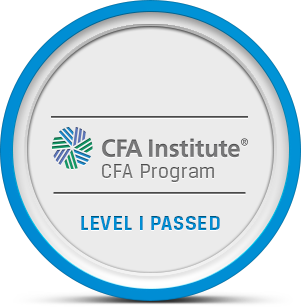
Chartered Financial Analyst Level 1
Get started today
Ultimate access to all questions.
Comments
Loading comments...

Ultimate access to all questions.
A portfolio comprises two securities with the following attributes: Expected Return Standard Deviation of Returns Security 1 17% 24% Security 2 6% 12% Given the portfolio's expected return of 12.6% and uncorrelated returns between the two securities, the portfolio's standard deviation is closest to:
A
13.4%.
B
15.2%.
C
19.2%.